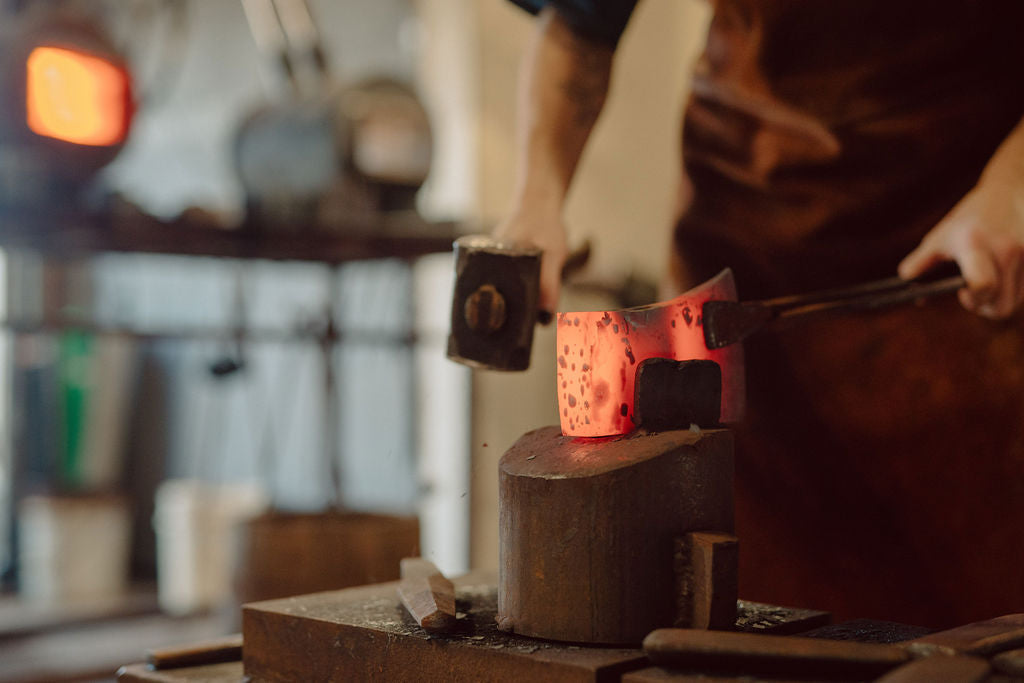Axe Making at B&C

Do you ever stop and wonder about how Brant & Cochran takes a billet of steel and through the application of heat, pressure and skill hand craft axes that Field & Stream Magazine call among the four best in the world? We’ll explain our process with videos pictures and stories: See the forges, hydraulic presses, power hammers, anvils, kilns, hammer and tongs and just plain skill of our axe makers.
The final result is a stunningly beautiful and functional tool that’s made to last for generations.
Learn more about How B&C Makes Axes
Restoring Vintage Axes

Should you restore your axe or let us do it? At Brant & Cochran, we’re renowned for bringing vintage axes back to life, showing that with skill and proper care, an old axe can be put into service for another generation.
Learn whether that axe you found at the swap meet or in your barn or garage is worth bringing back to life (or worth sending it to us to restore for you!)
Learn more about Restoring Vintage Axes
Know Your Axe

For a simple tool there is a lot to learn about an axe. From what the different parts of the axe and handle are called, to the many different types of axes (racing axe anyone?), to the many different patterns such as our beloved Maine wedge to the monster Puget Sound double bit patterns there is a lot to explore!
Axe Use

We don’t just make axes. We want them to be used - safely. Safety should always be the top priority when working with axes. After all, proper grip, stance, and swing techniques are vital to prevent accidents and ensure accurate and controlled strikes. Wearing appropriate protective gear, such as gloves and safety glasses, also helps minimize the risk of injuries.
Mastering axe techniques and skills not only keep axe users safe, but also opens up a world of possibilities. Whether it's chopping firewood, splitting logs, carving intricate designs, or even axe throwing, honing these skills allows for greater enjoyment of your axe.
Learn more about Using Your Axe
Axe Care

To prolong the lifespan and maintain the performance of an axe, regular maintenance and care are essential. This includes sharpening the bit to ensure a keen cutting edge, oiling the handle to prevent drying and cracking, and storing the axe properly to prevent damage.
By dedicating time to axe maintenance, users can extend the life of their axe and ensure its safe use.
Learn more about Caring for Your Axe
History of Axe Making

Axes have been a fundamental tool for thousands of years. Originating in prehistoric times, early axes were crafted from stone, eventually evolving to copper and iron heads. The Industrial Revolution marked a significant turning point in axe production accelerating axe production and innovation. These techniques traveled from Europe to Maine where a number of makers made their own pattern – like the the Maine wedge – and put their own unique mark on the industry.
Brant & Cochran’s Allagash Cruiser is modeled on a Maine wedge pattern axe borrowed from the Patten (Maine) Lumbermen’s Museum and is made using some of the same traditional processes pioneered by Maine axe makers of the past. Their stories are compelling and Brant & Cochran is proud to stand on their shoulders.